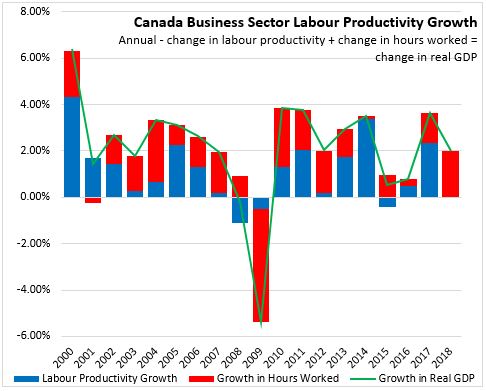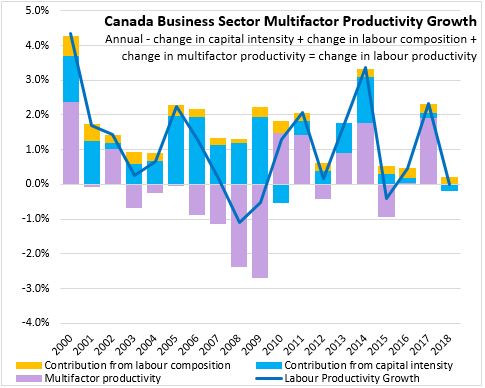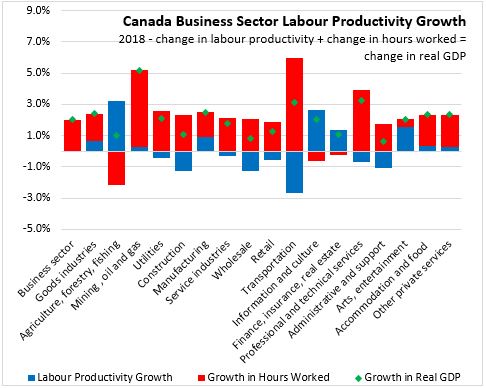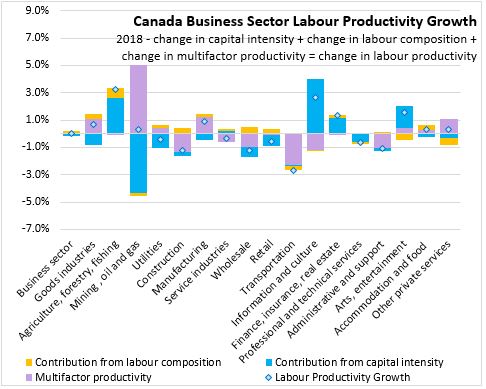The Economics and Statistics Division maintains archives of previous publications for accountability purposes, but makes no updates to keep these documents current with the latest data revisions from Statistics Canada. As a result, information in older documents may not be accurate. Please exercise caution when referring to older documents. For the latest information and historical data, please contact the individual listed to the right.
<--- Return to Archive
For additional information relating to this article, please contact:
March 09, 2020CANADIAN MULTIFACTOR PRODUCTIVITY GROWTH, 2018 Statistics Canada has released its national multifactor productivity and related variables for the business sector for 2018.
Growth in Real GDP can be decomposed into growth in hours worked and growth in labour productivity. Growth in labour productivity can be further decomposed into growth in capital intensity (ie: the amount of capital used in production), labour composition (ie: skills upgrading) and multifactor productivity. Multifactor productivity is the residual of economic growth that cannot otherwise be accounted for and is meant to reflect intangible contributions to economic growth from unobserved variables such as branding, economies of scale, technology or management practice.
Multifactor productivity measures are derived using a growth accounting framework that includes measures of how capital input and skills impact labour productivity growth. The residual portion of labour productivity growth that is not attributable to other factors is the multifactor productivity measure. Multifactor productivity (MFP) captures the efficiency by which inputs are used in production.
In 2018, Canadian labour productivity was flat (+0.01 per cent) and real GDP growth only came from a rise in hours worked.

In 2018, Canada's multifactor productivity growth was also zero (-0.02 per cent), In 2018, flat labour productivity was the net impact of a decline in capital intensity offsetting a rise in skills.

In 2018, labour productivity was up for agriculture/forestry/fioshing, mining/oil/gas, manfuacturing, information/culture, finance/insurance/real estate, arts/entertainment, accommodation/foood and other private services. Labour productivity was down for utilities, construction, wholesale, retail, transportation, professional/technical services and administration/support. Overall labour productivity was up for goods producing industries and down for service producing industries.

Multifactor productivity growth in 2018 was positive for goods producing industries and negative for service producing industries. Multifactor productivity growth was strongest in mining/oil/gas (offsetting a decline in capital intensity), manufacturing and other private services (such as repair and personal services). The largest declines in multifactor productivity were observed in transportation, administration/support, construction and information culture (where a large increase in capital intensity lifted overall productivity growth).

Statistics Canada. Table 36-10-0208-01 Multifactor productivity, value-added, capital input and labour input in the aggregate business sector and major sub-sectors, by industry
<--- Return to Archive